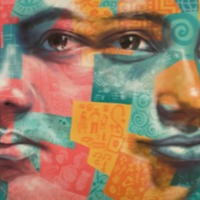
Nasreen Sheikh
There are an estimated almost 8 million people living in modern slavery in India (GSI 2018). India has a population of more than 1.3 billion people, there are still at least 270 million people living on less than US$1.90 per day. While laws, systems and attitudes regarding key 'fault lines' such as the caste system, gender and feudalism are rapidly changing, social change of this depth and scale necessarily takes time. In this context, it is perhaps unsurprising that existing research suggests that all forms of modern slavery continue to exist in India, including intergenerational bonded labour, forced child labour, commercial sexual exploitation, forced begging, forced recruitment into nonstate armed groups and forced marriage. Nasreen was born up into what she recognised as an oppressive society after witnessing the murder of her aunt and forced marriage of her older sister. To get out of her village, Nasreen travelled to Kathmandu to live with her cousin when she was nine years old. Here she experienced forced child labour and was forced to work twelve-hour days with little pay and poor living conditions. After two years the work ended, and she was left homeless. She received help from a stranger and began a distance education course. She recalls how this education brought her to understand the issues affecting Kathmandu society and sought out ways to address these. At fifteen years old she started Local Women’s Handicrafts to empower women and girls recovering from trauma and living in poverty.
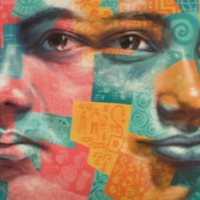
A.
There are an estimated 20,000 people living in conditions of modern slavery in Albania (GSI 2018). An estimated 10% of girls in Albania are married before their eighteenth birthday, with child marriage most common among the Roma ethnic group and in poor, isolated and rural areas. Child marriage is driven by gender inequality and while country has committed to eliminate child, early and forced marriage by 2030 in line with target 5.3 of the UN Sustainable development goals, no progress has been reported thus far. Human traffickers also exploit domestic and foreign victims in Albania, and traffickers exploit victims from Albania abroad. Traffickers exploit Albanian women and children in sex trafficking and forced labor within the country, especially during tourist season. Traffickers use false promises such as marriage or employment offers to force victims into sex trafficking. Traffickers exploit Albanian victims in sex trafficking in countries across Europe, particularly Kosovo, Greece, Italy, Belgium, Germany, Switzerland, North Macedonia, Norway, the Netherlands, and the UK. Albanian migrants who seek employment in Western Europe face forced labor and forced criminality, particularly in the UK. When she was a young girl A’s mother left her father for another man. Too poor to look after her, A’s mother sent her to live with a neighbours’ family who, while treating her well at first, began to withhold food and exploit her. She stayed there for one year before returning to live with her mother who, after spending some time begging, had been forced in to prostitution by a man who had promised to help her get a better house. A’s mother’s boyfriend began sexually abusing her, and when a friend found out, he hit the boyfriend with his car. A began working as a prostitute at the age of 13, thinking she was helping her mother who was too ill to work. One day A met a man who took her to a convent in Italy who referred her to a shelter where she was helped build a better life.
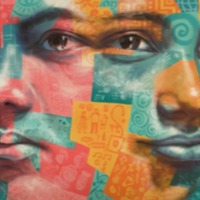
Keum-Ju Kim
The Global Slavery Index 2018 estimates that there are 2,640,000 people living in conditions of modern slavery in The Democratic People’s Republic of Korea (North Korea). Men, women and children are subjected to forced labour and sex trafficking. Government oppression in the DPRK prompts many North Koreans to flee the country in ways that make them vulnerable to human trafficking in destination countries. Many of the estimated 10 000 North Korean women and girls who have migrated illegally to China to flee abuse and human rights violation are particularly vulnerable to trafficking. Some lure, drug, detain or kidnap North Korean women on their arrival, others offer jobs but subsequently force the women into prostitution, domestic service, or forced marriage. If found, Chinese authorities often repatriate victims back to the DPRK where they are subjected to harsh punishment including forced labour in labour camps or death.Keum-Ju Kim left North Korea in 2009, travelling with a neighbour to China. However once she arrived, her neighbour sold her to a Chinese man.
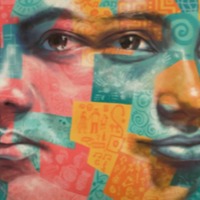
Laboni
There are an estimated 171,000 people living in modern slavery in Nepal. Within Nepal, bonded labour exists in agriculture, brick kilns, the stone-breaking industry, and domestic work. Sex trafficking of Nepali women and girls increasingly takes place in private apartments, rented rooms, guest houses, and restaurants. Nepali and Indian children are subjected to forced labor in the country, especially in domestic work, brick kilns, and the embroidered textile, or zari, industry. Under false promises of education and work opportunities, Nepali parents give their children to brokers who instead take them to frequently unregistered children’s homes in urban locations, where they are forced to pretend to be orphans to garner donations from tourists and volunteers; some of the children are also forced to beg on the street.Laboni* was sent to an orphanage after her parents could no longer afford to look after her. At the orphanage Laboni was forced to do all the housework, being subjected to beatings if she did not do the work properly.
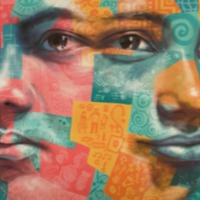
Kundamanchi Ramulamma
It is estimated that almost 8 million people are living in conditions of modern slavery in India (GSI 2018). The skewed sex ratio in some regions of India has fuelled the trafficking and selling of women and young girls as brides within India. Women are reportedly sold off into marriage by their families, sometimes at a young age, and end up enduring severe abuse, rape and exploitation by their husbands. It is also reported that women and girls from impoverished backgrounds have been lured by promises of marriage by younger men from urban areas, then forced into sex work once married. Kundamanchi Ramulamma was 15 years old when she was married to a person from her caste. After the marriage, Kundamanchi Ramulamma was sexually abused by her father-in-law. He father went to the panchayat who eventually agreed to a divorce, however, a few month later, Kundamanchi Ramulamma was forced to marry again.
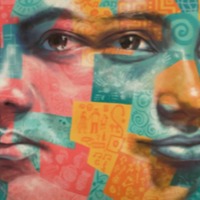
The Khans
The Global Slavery Index 2018 estimates than there are 749,000 people living in conditions of modern slavery in Afghanistan. Within the country men, women and children are exploited in bonded labour, where an initial debt assumed by a worker as part of the terms of employment is exploited, ultimately entrapping other family members and sometimes for multiple generations. Some entire Afghan families are trapped in debt bondage in the brick-making industry in the Easter part of the country. Zabit Khan and his family were living as refugees in Pakistan when he became ill and borrowed several thousand dollars from a kiln owner to cover his medical costs. He began working at the kiln but was not earning enough to pay off the debt. As his family grew, Zabit had to borrow more for food, medicine and other basic needs for his children. Seven years later an Afghan kiln owner bought the Khans’ debt and they began working for him back in Afghanistan. Khan, his wife and his 9 young children would spend 12 hours a day squatting in the dirt making line after line of clay bricks.
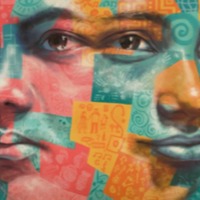
Paek Sun-Joo
China is a source, destination, and transit country for men, women, and children subjected to forced labor and sex trafficking. China’s internal migrant population, estimated to exceed 180 million people, is vulnerable to trafficking, with Chinese men, women, and children subjected to forced labor in brick kilns, coal mines and factories, some of which operate illegally and take advantage of lax government enforcement. Forced begging by adults and children occurs throughout China. There are reports of traffickers targeting for forced labor and forced begging persons with developmental disabilities as well as children whose parents have migrated to the cities and left them with relatives, estimated at more than 60 million. Paek Sun-Joo, was sold to China at 18 years old as a street child.
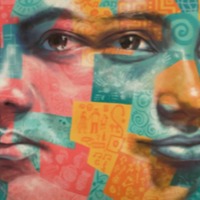
Ruhana M
Despite signs of progress, Bangladesh continues to have one of the highest child marriage rates in the world.66% of girls in Bangladesh are married under 18 with the average age of marriage for girls in the country being 15. As well as deeply embedded cultural beliefs, poverty, is also a driving factor for child marriage, with parents’ seeking to obtain economic and social security for their daughter. Dowry also continues to be a driving factor, with prices often increasing the older a girl gets. Ruhana M. was 10 when she was sent to live in Dhaka with her stepsister who works at a garment factory. Ruhana was told that she would be cared for and sent to school, however upon arrival she was forced to cook and clean in the home. When Ruhana began menstruating at age 12, her stepsister forced her to marry a man she did not know. Ruhana now has a six-year-old daughter. She does day labor as a road worker to pay for her daughter to go to school.
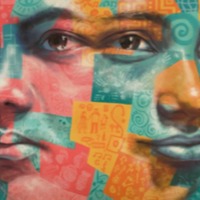
Anita A
Despite signs of progress, Bangladesh continues to have one of the highest child marriage rates in the world.66% of girls in Bangladesh are married under 18 with the average age of marriage for girls in the country being 15. As well as deeply embedded cultural beliefs, poverty, is also a driving factor for child marriage, with parents’ seeking to obtain economic and social security for their daughter. Dowry also continues to be a driving factor, with prices often increasing the older a girl gets. Anita was 13 years old when she was forced to marry a man she did not know. Anita became pregnant 5 months in to the marriage at 14 years old. Her delivery was extremely difficult and the baby died, leaving Anita in severe pain and injured. Anita now worries that if she cannot have another baby, her husband will leave her.
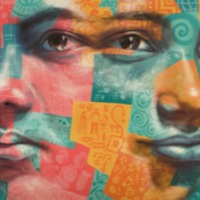
Dorothy
Malawi is a source, transit and destination country for men, women and children trafficked for the purposes of forced labour and commercial sexual exploitation. Internal trafficking is believed to be more prevalent in the country, with people being subjected to forced labour in agriculture, animal herding, and domestic servitude. Girls and young women are trafficked internally for forced labour and prostitution at local bars and rest houses. Moreover, Malawi has one of the highest rates of child marriage in the world with approximately 1 in 2 girls being married by the age of 18. Child marriage is closely linked to poverty in the country, with girls being married in order to improve a family’s financial status. The government is working to combat child marriage, with the President having signed a constitutional amendment in April 2017 increasing the legal age of marriage to 18 years old. At the age of 15 Dorothy was forced to marry by her mother who thought it would be a solution to their financial problems. However she was mistaken and Dorothy continued to live in poverty, with little food and was locked in her own house so that her husband could see his ‘girlfriends’. Dorothy came in to contact with a youth group supported by Plan International and was able to divorce her husband. She now helps other young girls escape their forced marriages.
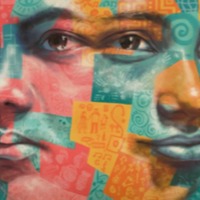
Anita G
In Tanzania, 4 out of 10 girls are married before their 18th birthday. A study by the United Nations Population Fund (UNFPA) estimated that 37 percent of Tanzanian women aged 20−24 years were first married or in union before the age of 18, between 2000−2011. Early marriage remains a significant problem in Sub-Saharan Africa, with UNICEF predicting that half of the world’s child brides will be African by 2050. Anita G.was 16 and in her second year of secondary school when her father forced her to leave school and get married. When Anita and her mother opposed the marriage, her father beat them both.
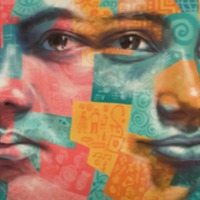
Shelia
Despite having the lowest regional prevalence of modern slavery in the world, Europe remains a destination, and to a lesser extent, a source region for the exploitation of men, women and children in forced labour and commercial sexual exploitation. According to the most recent Eurostat findings, European Union (EU) citizens account for 65 percent of identified trafficked victims within Europe. These individuals mostly originate from Eastern Europe, including Romania, Bulgaria, Lithuania and Slovakia. In Albania and Bosnia and Herzegovina, the European Parliament has identified corruption and the judicial system as reform challenges towards accession talks within the EU. In Greece, the turbulent economic situation has increased vulnerability for populations seeking employment and livelihood opportunities. In Greece, unemployment reached 24.4 percent in January 2016 with a youth unemployment rate of 51.9 percent. Sheila was 15 years old and living in Nigeria with her parents when a woman offered to take her abroad to work and get an education. However, upon arrival she was forced to carry out all the housework, as well as provide sexual services for older men.
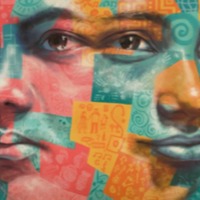
Matilda
In Tanzania, 4 out of 10 girls are married before their 18th birthday. A study by the United Nations Population Fund (UNFPA) estimated that 37 percent of Tanzanian women aged 20−24 years were first married or in union before the age of 18, between 2000−2011. Early marriage remains a significant problem in Sub-Saharan Africa, with UNICEF predicting that half of the world’s child brides will be African by 2050. Matilda was forced to marry a man she did not know. Her husband physically and sexually abused her and could not afford to support her.
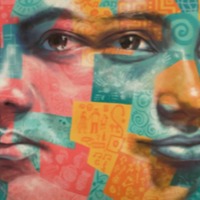
Rina
India has a population of more than 1.3 billion people, there are still at least 270 million people living on less than US$1.90 per day. While laws, systems and attitudes regarding key 'fault lines' such as the caste system, gender and feudalism are rapidly changing, social change of this depth and scale necessarily takes time. In this context, it is perhaps unsurprising that existing research suggests that all forms of modern slavery continue to exist in India, including intergenerational bonded labour, forced child labour, commercial sexual exploitation, forced begging, forced recruitment into nonstate armed groups and forced marriage. While bonded labour has been outlawed for decades, survey data and pre-existing research confirms that this practice still persists. Bonded labour is not only illegal, research confirms that it has serious negative health impacts for those affected, who typically work in unsanitary and dangerous working conditions with no access to health care. Riya tells of how she was forced to live and work on her employer's land as her family could not afford a house of their own. When her son became ill and she had to take a loan in order to pay for the treatment. Riya and her family were forced to work to pay off the loan and due to pressure from her employer, Riya had to take her son out of school for him to work long hours in the employer's home where he was subjected to threats and physical violence.
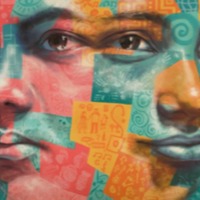
Kwame and Joe
In 2016, the estimates of modern slavery in Sub-Saharan Africa accounted for approximately 13.6 percent of the world's total enslaved population. As evident from surveys conducted in Ghana, Nigeria, South Africa and Ethiopia by Walk Free Foundation, slavery in Sub-Saharan Africa takes the form of forced labour and forced marriage. In Ghana, survey results suggest that there are an estimated 103,300 people enslaved in that country, of which 85 percent are in forced labour, and 15 percent are in forced marriage. For forced labour, the main industries of concern are farming and fishing, retail sales and then manual labour and factory work. In Nigeria, survey results suggest that forced labour is predominantly within the domestic sector, although it was impossible to survey in three regions due to high conflict. In South Africa, the industries most reported in the survey include the commercial sex industry, manual labour industries such as construction, manufacturing and factory work, and drug trafficking. Kwame, 14, and Joe, 12, were sold by their mother to a fisherman in Ghana.
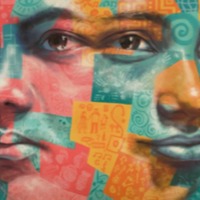
Valdete
Born in Albania, Valdete was trafficked into Greece, where Albanian victims are also trafficked in from Nigeria, and then into Italy. Many women are trafficked into richer Western European countries from the poorer Eastern countries, including Albania. The fall of communism in 1991 led to a rise in organized crime in Albania: in 2001 it was estimated 100,000 Albanian women and girls had been trafficked to Western European and other Balkan countries in the preceding ten years. More than 65 percent of Albanian sex-trafficking victims are minors at the time they are trafficked, and at least 50 percent of victims leave home under the false impression that they will be married or engaged to an Albanian or foreigner and live abroad. Another ten percent are kidnapped or forced into prostitution. The women and girls receive little or no pay for their work, and are commonly tortured if they do not comply.
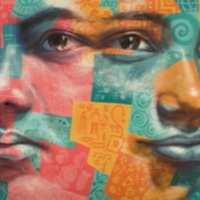
Denise
In the Philippines, where three major insurgent groups have fought the Philippine military since the 1960s, there are an estimated 2000 child soldiers. The Communist-oriented New People’s Army, established in 1968, began an intense recruitment of children in the 1990s. By 2000, some 25 percent of new recruits were children, and more than ten percent of its regular combatants are now under 18. Parents volunteer children to serve as combatants and camp guards. The Moro Islamic Liberation Front allows the training of children as young as 12. Parents volunteer their children, seeing it as an observation of Islamic teaching, and Muslim youth organizations recruit students from schools and colleges. The Abu Sayyaf (“Bearer of the Sword”), a Muslim separatist group which appeared in the late 1980s, uses Islamic religion to draw minors into the movement, for use as combatants, human shields, and hostages.Denise became a child soldier in the Philippines at the age of 16.
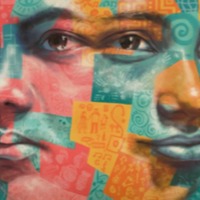
Aida
Aida was recruited as a child soldier by a militia group in the Philippines at the age of 14 and then prevented from leaving. She was engaged in armed conflict for six months, one of hundreds of thousands of children who participate in armies and armed groups in more than 30 countries around the world. The problem is most critical in Africa, where up to 100,000 children are estimated to be involved in armed conflict. Child soldiers also exist in Afghanistan, Burma, India, Indonesia, Iran, Iraq, Israel and the Occupied Palestinian Territories, though international law sets 18 as the minimum age for all participation in hostilities. In the Philippines, where three major insurgent groups have fought the Philippine military since the 1960s, there are an estimated 2000 child soldiers. The Communist-oriented New People’s Army, established in 1968, began an intense recruitment of children in the 1990s. By 2000, some 25 percent of new recruits were children, and more than ten percent of its regular combatants are now under 18. Parents volunteer children to serve as combatants and camp guards. The Moro Islamic Liberation Front allows the training of children as young as 12. Parents volunteer their children, seeing it as an observation of Islamic teaching, and Muslim youth organizations recruit students from schools and colleges. The Abu Sayyaf (“Bearer of the Sword”), a Muslim separatist group which appeared in the late 1980s, uses Islamic religion to draw minors into the movement, for use as combatants, human shields, and hostages.
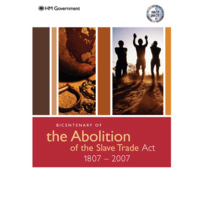
Bicentenary of the Abolition of the Slave Trade Act 1807-2007
The official publication from the British Government in response to the bicentenary included a message from Prime Minister Tony Blair. It set out the history of transatlantic slavery and resistance to it, and featured a calendar of upcoming events for 2007 relating to slavery and abolition. The publication also detailed contemporary efforts to end modern slavery. Later in 2007, 'The way forward: bicentenary of the abolition of the Slave Trade Act 1807-2007' reflected on some of the commemorative activity that had taken place in Bristol, Hull, Liverpool, London and Greater Manchester. With a foreword by the new Prime Minister, Gordon Brown, the theme of the publication was 'Reflecting on the past, looking to the future' and it linked efforts for the abolition of historical and contemporary slavery. The publication also looked to how to tackle inequality and poverty in the UK, Africa and the Caribbean.
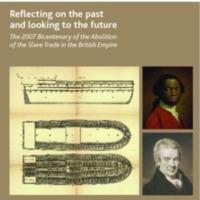
Reflecting on the Past and looking to the future
The official publication to mark the bicentenary from the Department for Culture, Media and Sport (DCMS), setting out the Government response to the commemorations. This included the formation of a 2007 Bicentenary Advisory Group, chaired by the Deputy Prime Minister John Prescott MP, to co-ordinate a national response to the bicentenary and to UNESCO International Slavery Remembrance Day on 23 August. The Group was made up of a number of influential stakeholders to encourage action across the cultural, community and faith sectors and ensure that the bicentenary was made relevant to local communities. Participating organisations included Anti-Slavery International, Amnesty International, the Archbishops Council, Bristol City Council, Churches Together in England, the Equiano Society, the Evangelical Alliance, National Museums Liverpool, National Maritime Museum, Museum of London, the Wilberforce Institute for the study of Slavery and Emancipation and several faith and community leaders.